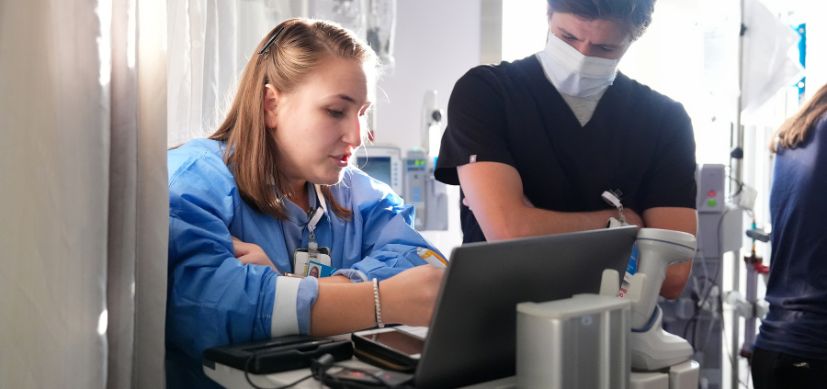Most-Shared Research from Cincinnati Children’s and Colleagues February 2020
Post Date: March 2, 2020 | Publish Date:

Scientists at Cincinnati Children’s authored or co-authored 114 journal articles published in February 2020. Here are some of our most-shared findings of the month:
Click on the badges for more detail.
Surviving Sepsis Campaign International Guidelines for the Management of Septic Shock and Sepsis-Associated Organ Dysfunction in Children.
Hector Wong, MD, Director, Division of Critical Care Medicine at Cincinnati Children’s was part of a 49-member panel that developed evidence-based recommendations for clinicians caring for children (including infants, school-aged children, and adolescents) with septic shock and other sepsis-associated organ dysfunction.
Article in Pediatric Critical Care Medicine, February 2020
Wong also was among the co-authors in a widely-shared executive summary of the guidelines published in Pediatric Critical Care Medicine and a parallel publication in Intensive Care Medicine.
Results of the FUEL Trial
Elaine Urbina, MD, MS, Bryan Goldstein, MD, Michelle Hamstra and Kathleen Rathge of Cincinnati Children’s were listed as contributing authors in a 30-center clinical trial to evaulate how the drug udenafil affects oxygen consumption during exercise among patients who had received Fontan procedures to repair heart defects.
Although udenafil was not shown to improve peak oxygen consumption, the findings indicate that udenafil improves cardiovascular physiology at moderate levels of exercise.
Article in Circulation, February 2020
Worldwide Secular Trends in Age at Pubertal Onset Assessed by Breast Development Among Girls: A Systematic Review and Meta-Analysis
Frank Biro, MD, a long-time expert in puberty studies in our Division of Adolescent Medicine, was a co-author of this global-scale study.
The co-authors report a 1-year decline worldwide in the age of puberty onset for girls from 1977 to 2013.
Article in JAMA Pediatrics, February 2020
Atopic Dermatitis Independently Increases Sensitization above Parental Atopy: the MPAACH Study
Jocelyn Biagini Myers, PhD, was senior author of a study that included at team of eight other scientists at the University of Cincinnati and Cincinnati Children’s.
The team reported that the allergy risks tied to compromised skin are even larger than inheriting risk genes from a parent.
Article in The Journal of Allergy and Clinical Immunology, February 2020
Insulin-like Growth Factor 1 Supports a Pulmonary Niche that Promotes Type 3 Innate Lymphoid Cell Development in Newborn Lungs
Hitesh Deshmukh, MD, PhD, led a team of a dozen other scientists at the University of Cincinnati and Cincinnati Children’s, in a study that provides new detail on how type 3 innate lymphoid cells (ILC3s) form in the newborn lung.
These cells are critical for lung defense against bacterial pneumonia and disrupted lung development in prematurely born infants may have enduring effects on host resistance to respiratory infections.







